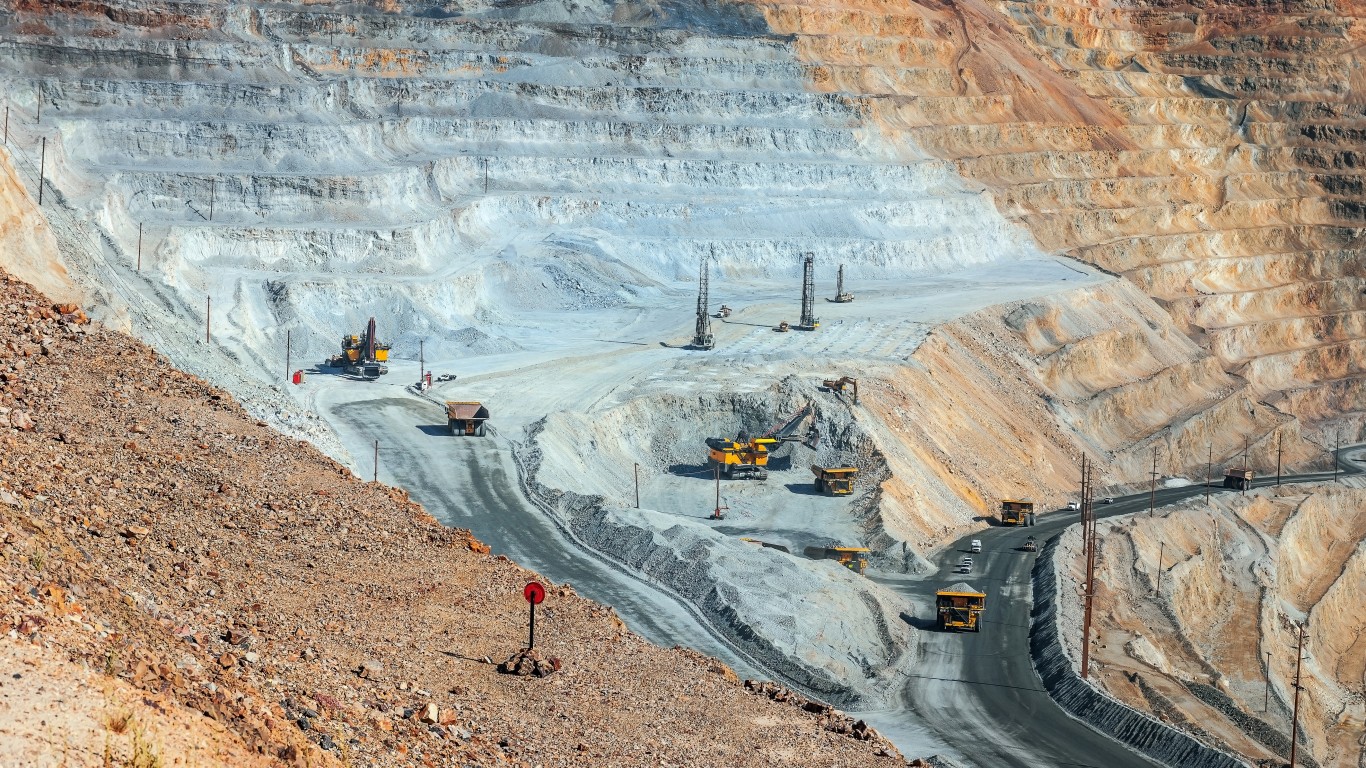Commodities & Metals
These 4 Copper-Mining Stocks Pay Outstanding Dividends

Published:
Last Updated:

Copper prices have come down by more than 12% from the 12-month high but remain nearly 50% higher than a year ago. The sharp run-up in the commodity price of copper was the result of what seemed to investors as a global economy once more on the rise, following a devastating battle with the coronavirus. By mid-May, the signs of lower-than-expected economic growth began to weigh on copper prices and on the shares of the companies that mine copper.
For the miners, rising demand from renewable and sustainable energy producers drove up pricing. The recent downturn is not expected to last, if for no other reason than that demand for renewables will continue to grow. However, higher copper prices may make renewable energy projects financially unworkable.
A recent Citigroup estimate concluded that the global shortfall in copper production will reach 521,000 metric tons this year. Copper miners and refiners will need to invest more than $100 billion to dodge a shortfall that could reach 4.7 million metric tons annually by 2030. The good news is that high copper prices are encouraging more investment in mining projects that were once not believed to be economically feasible.
Among the world’s top producers of copper in 2020, one is nationalized, and the other trades only over the counter (OTC) in the United States. Chile’s national copper company, known as Codelco, produced 1.73 million metric tons of copper last year, the most of any copper miner. Chile’s estimated copper reserves are the largest in the world, at around 200 million metric tons.
OTC-traded Glencore produced 1.26 million metric tons of copper last year from operations in Australia, Africa and South America. Glencore’s major copper mines are located in Peru and Chile, and it was the world’s fourth-largest copper producer in 2020.
Another of the world’s top five copper producers, Freeport-McMoRan Inc. (NYSE: FCX) failed to make our list of the highest dividend payers, but over the course of the past 12 months, the company’s stock price has more than doubled. Freeport mined 1.45 million metric tons of copper in 2020. The company’s dividend yield is only about 0.95%, however.
Phoenix-based Southern Copper Corp. (NYSE: SCCO) was 2020’s fifth-largest copper miner, with total production of 1 million metric tons. The company’s major operations are located in Mexico and Peru and the company is a subsidiary of Americas Mining, the mining arm of Grupo Mexico. Glencore pays a dividend yield of around 3.3%.
Southern Copper’s share price has increased by 33.3% over the past 12 months, and the stock currently trades at around $58.35, implying an upside of about 2.8% to a median price target of $60. None of the 15 brokerages covering the stock has a Buy or Strong Buy rating on the shares. The stock’s 52-week range is $45.88 to $83.29, and the annual dividend of $3.60 works out to a yield of 6.4%.
BHP Group (NYSE: BBL) is the U.S.-traded version of BHP that’s primary listing is on the LSE. BHP’s Australia-listed shares also trade in the United States, and the two are fundamentally the same, but the LSE-variant pays its dividend in sterling so there are exchange rate differences with the Australia-listed shares. BHP produced 1.68 million metric tons of copper in the 2020 calendar year to rank as the world’s second-largest producer. The company is the joint owner of the world’s largest copper mine, the Escondida mine in Chile, with partners Rio Tinto and Japan’s JECO.
The BBL shares have risen by more than 38% over the past 12 months, and the stock trades at around $52.10, implying upside of 19% based on a median price target of $62. The majority of brokerages covering the stock (11 of 19) rate the shares at Hold, and six rate the stock a Buy or Strong Buy. The stock’s 52-week range is $37.88 to $68.05, and the company pays an annual dividend of $6.02, for a yield of 11.79%.
U.K.-based Rio Tinto Group (NYSE: RIO) has copper mines in Mongolia and Utah, along with a new prospect in Western Australia. The company produced about 528,000 metric tons of copper last year, not enough to qualify for the top five. Rio Tinto has guided 2021 copper production in a range of 500,000 to 550,000 metric tons.
Rio Tinto’s share price has increased by about 29% in the past year, and the stock trades at around $68.60, implying an upside of more than 14% based on a median price target of $78.50. Of 23 analysts covering the stock, 11 rate the shares as a Buy or Strong Buy, and nine more have a Hold rating on the stock. The 52-week range is $55.39 to $95.97, and Rio Tinto pays an annual dividend of $6.85, for a yield of 10.2%.
Brazil’s Vale S.A. (NYSE: VALE) produced about 360,000 metric tons of copper in 2020. Like Rio Tinto, the amount was not enough to rank even in the top 10 producers of copper. The company is a global leader in iron ore production, however, with an expected 2021 total of 315 million to 335 million metric tons. A July strike at the company’s Sudbury, Canada, mine and a recent fire at its Brazilian Salobo mine have hampered production, however.
Over the past 12 months, Vale’s share price has jumped by 62%, and the stock trades at around $14.50, implying nearly 50% to a median price target of $21.70. Of 22 analysts covering the stock, 16 rate the shares a Buy or Strong Buy, and five more have a Hold rating on the stock. The 52-week price range is $10.39 to $23.18. Vale’s annual dividend is $2.70, yielding a whopping 19.25%.
Thank you for reading! Have some feedback for us?
Contact the 24/7 Wall St. editorial team.